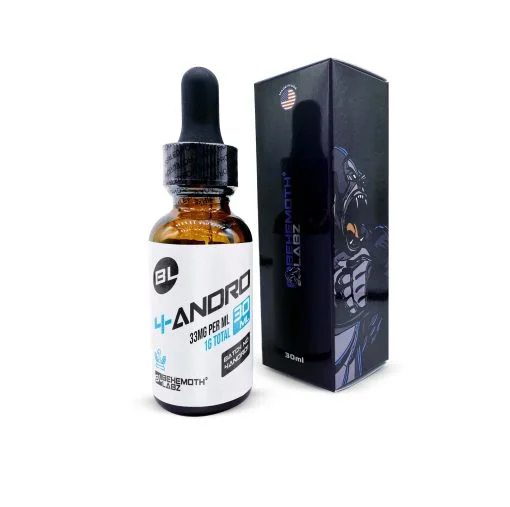SARMs
S23 SARM Vs. RAD 140 | Which SARM is Better?
With the growing focus on receptor-specific modulation in experimental pharmacology, selective androgen receptor modulators (SARMs) have become prominent tools in research settings. Among them, S23 and RAD 140 (Testolone) stand out for their distinct molecular characteristics and targeted activity within androgen-sensitive tissues.
Selecting the appropriate compound for a given study demands a careful comparison of their biological interactions and experimental outcomes. This article provides a scientific overview of S23 and RAD 140 to assist researchers in aligning compound selection with study objectives.
What are S23 and RAD 140?
S23 is a non-steroidal SARM first developed in the early 2010s. It has been studied in preclinical models for its high binding affinity to androgen receptors. Research indicates that S23 may exhibit significant anabolic activity and tissue selectivity, making it a candidate for further investigation in areas such as metabolic regulation and androgen receptor modulation.
RAD 140 (Testolone) is another investigational SARM developed to interact selectively with androgen receptors, primarily in muscle and bone tissues, with the aim of minimizing off-target effects. It has garnered attention for its potential neuroprotective properties and favorable anabolic-to-androgenic activity ratio in preclinical settings.
Note: Both S23 and RAD 140 are investigational compounds intended for research purposes only. They are not approved for human consumption or therapeutic use.
How Do S23 and RAD 140 Work?
Both S23 and RAD 140 are designed to selectively bind to androgen receptors, particularly in skeletal tissues, initiating a cascade of transcriptional activities associated with anabolic responses. These compounds are distinguished from anabolic steroids by their tissue selectivity, which may result in reduced activity in non-target tissues.
Preclinical studies suggest that their mechanisms may promote protein synthesis and other cellular processes relevant to muscle and bone physiology, while minimizing undesirable androgenic effects. However, further research is needed to establish safety profiles, pharmacokinetics, and long-term effects.
S23 and Rad 140: Features Comparison
Below is a comparative outline of S23 and RAD 140 based on current research findings:
- S23 is more potent than RAD 140
- S23 has more affinity for androgen receptors in cells as compared to RAD 140
- S23 has higher bioavailability than RAD 140
- RAD 140 has fewer side effects on subjects than S23 as shown in research studies.
- S23 has higher anabolic power than RAD 140
S23 Vs. RAD 140 – Potential Research Applications
In scientific studies, both S23 and RAD 140 have shown promise for a range of investigational applications. These include exploration into their effects on muscle tissue integrity, androgen receptor modulation, and metabolic activity under controlled conditions. Key focus areas include:
1. Tissue Anabolism and Androgen Receptor Modulations
Both S23 and RAD 140 have been studied for their capacity to stimulate anabolic pathways through selective androgen receptor engagement. Comparative studies indicate that S23 may result in more pronounced activation in preclinical models, while RAD 140 offers a potentially more moderate response profile.
2. Body Composition and Metabolic Activity in Test Models
Experimental data suggest S23 may influence metabolic parameters such as energy utilization and substrate oxidation. RAD 140 also demonstrates similar activity but may do so in a more regulated fashion, as observed in rodent models.
3. Performance and Endurance
Both compounds have been evaluated for their effects on endurance capacity and overall physical performance in non-human subjects. While S23 may promote rapid physiological changes, RAD 140 is often noted for contributing to sustained performance metrics over time in research scenarios.
S23 and RAD 140 Side Effects: Comparative Analysis
While SARMs are being actively researched for their tissue-selective activity, it is critical to understand their risk profiles. Both S23 and RAD 140 may induce adverse outcomes under certain conditions in preclinical studies. Observed side effects include:
- Altered hormone levels
- Hepatic enzyme elevation
- Changes in lipid profiles
- Suppression of endogenous androgen production
S23, due to its higher potency, may be more likely to produce these effects compared to RAD 140. However, the magnitude and nature of these effects can vary depending on dosage, duration, and the biological system under investigation.
S23 Versus Rad 140: Results
Preclinical findings have demonstrated that both S23 and RAD 140 can elicit measurable androgenic and anabolic responses in test models. At equivalent dosages, S23 may exhibit stronger effects, though RAD 140 is often favored for studies requiring a safer profile or longer observation periods.
Similarities between S23 and RAD 140
Despite their differences, both SARMs share several core attributes:
- Classified as selective androgen receptor modulators
- Act on androgen receptors to promote anabolic processes
- Studied for applications in muscle and bone research
- Investigated for potential roles in conditions involving tissue wasting (in preclinical models)
- Both are non-steroidal compounds with oral bioavailability
S23 and RAD 140 Stacking
In some advanced research protocols, S23 and RAD 140 are combined to evaluate their synergistic effects. Studies suggest that such combinations may yield enhanced physiological outcomes, including greater receptor activation and broader metabolic shifts. However, stacking also increases the complexity of interpreting results and managing adverse effects.
S23 SARM vs RAD 140: Which One is Better?
The suitability of S23 or RAD 140 depends entirely on the research context. If the goal is to study a high-potency androgen receptor modulator, S23 may be appropriate. Conversely, for projects emphasizing tolerability and neuroprotective properties, RAD 140 may offer a more favorable profile. Each compound brings unique properties to the research environment, and selection should align with specific experimental goals.
Conclusion
S23 and RAD 140 are among the most studied SARMs in preclinical research. Each exhibits unique characteristics in terms of potency, selectivity, and biological response. While S23 is often considered the more potent agent, RAD 140 tends to offer a more balanced profile in model organisms. Importantly, both are intended strictly for laboratory use and are not approved for human consumption or therapeutic applications.
Researchers must adhere to rigorous protocols when designing studies involving these compounds to ensure validity, reproducibility, and safety.
Frequently Asked Questions
What is the best place to buy S23 and RAD 140 online for research purposes?
Researchers seeking high-purity SARMs for investigational use may consider Behemoth Labz. The supplier is known for providing compounds intended solely for scientific research and not for human or veterinary use.
Are S23 and RAD 140 legal for research use?
Yes, these compounds are legal when acquired for legitimate scientific or educational research. They are not approved for dietary or pharmaceutical applications.
What are the recommended dosages for research?
Typical research protocols utilize 10–50 mg of S23 or RAD 140 per day in test models, over durations of 6 to 18 weeks. These values are for experimental guidance only and should be adjusted based on specific research objectives.
How are S23 and RAD 140 administered in studies?
Both compounds are commonly administered orally in experimental settings. Administration methods should be consistent and validated for the specific model system in use.
Reference:
- Wen, Jimmy, et al. “Selective Androgen Receptor Modulators (SARMs) Effects on Physical Performance: A Systematic Review of Randomized Control Trials.” Clinical Endocrinology 102.1 (2025): 3-27.
- Loss, Fat. “RAD-140 Review: Benefits, Dosage & Side Effects.”
- Puskas, Jake. Pre-clinical assessment of the selective androgen receptor modulator RAD140 to increase muscle mass and bone mineral density. Diss. 2022.











